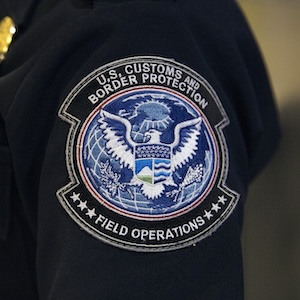Steep U.S. Tariffs Roil Global Jewelry Markets

In the wake of President Trump’s announcement of steep tariffs on virtually all goods coming into the United States, the jewelry industry has scrambled to respond.
Some said they were reevaluating their supply chains. Some hoped that tariff talk was just posturing, and that this new trade war would blow over soon. Others worried about the tariffs’ effect on the U.S. economy, in light of steep drops in the financial markets.
“The global [jewelry] supply chain is so interconnected at this point—from companies that have operations or contractors in Asia or Mexico, to those who get raw materials from Canada or India—that few companies will be unaffected,” David W. Cochran, president and CEO of MJSA (Manufacturing Jewelers & Suppliers of America), tells JCK.
“Even if companies do bring more production in the United States, the cost of materials will still be escalated. There’s also the uncertainty of what this could mean economically, and how it might affect the mood of consumers. Jewelry is basically a discretionary expenditure, and if consumers get nervous about prices and the economy in general, jewelry sales could suffer until things normalize,” Cochran says.
At a Jewelers Vigilance Committee (JVC) webinar held Thursday, trade attorney Peter Klestadt noted that the tariffs do not exempt rough gemstones (except possibly from Canada, due to the United States-Mexico-Canada Agreement), special economic zones (including SEEPZ in India), “grandfathered” items, or antiques. (What is exempt: raw gold, silver, and platinum.)
He said tariff mitigation strategies exist but are limited. They include “unbundling”—where companies farm out certain services to separate companies (which can be related), to exclude non-dutiable services from the item’s value.
Current “country of origin” rules say that when calculating tariffs, an item’s value is based on where it was “substantially transformed”—which for gemstones means where they were cut and polished. So a diamond cut and polished in Botswana would get hit with that country’s new 37% levy, but a gem mined in Botswana but cut and polished in India would incur India’s lower 26% import tax.
That “substantial transformation” policy also includes transport centers; while the United Arab Emirates was slapped with only a 10% duty, Indian-cut diamonds sold from there must still list India as “country of origin.” (Antwerp World Diamond Centre has posted a guide to U.S. diamond import policies, which can be seen here.)
However, Klestadt told the JVC webinar, Customs has also said that where a piece of jewelry is cast determines its origin, which offers possible opportunities for the industry.
He said it’s very likely the tariffs will be adjusted—so importers may want to store goods in a bonded warehouse, to avoid tariffs until the goods leave the facility.
Klestadt also noted that items not intended for sale—such as gemstones sent to a grading lab or jewels brought in to be exhibited (but not sold) at a trade show—can be imported duty-free using a temporary importation under bond (TIB).
Even so, GIA issued a letter yesterday announcing that its laboratories outside the United States will temporarily not accept items outside the local service criteria that would need to be sent to its U.S. labs. In addition, GIA is temporarily asking clients outside the U.S. to not send items directly to GIA in the U.S.
“We are working to understand the impact of newly announced tariffs [and] what operational changes may be needed,” says spokesperson Stephen Morisseau.
India’s Gem & Jewellery Promotion Council (GJEPC) said in a statement that the tariffs would present “a significant burden on Indian exporters and American consumers alike” and “significantly impact” India’s diamond and jewelry sector.
China was hit hard by the new policy, though it wasn’t clear what its new tariff rate will be—initial reports said it would total 54%, counting existing tariffs, but other reports suggest that when the new import taxes are factored in, it could reach as high as 79%.
The new tariffs count Hong Kong and Macao as part of China, and eliminate the current de minimis exemptions for lower-value Chinese imports.
The Swiss watch business was especially concerned by the tariffs, as it’s coping with a slowdown in China and increase in the Swiss franc.
”We cannot make Swiss watches in the U.S.,” Rolf Studer, co-CEO of Swiss brand Oris, told Hodinkee. (Indeed, when Trump sold a branded watch last year, he boasted it was “Swiss-made.”)
JVC president and CEO Sara Yood said on the webinar that the tariffs could prove particularly challenging for the jewelry business, given its global nature.
“We are so much stronger because we’re a really connected community,” she said. “I’ve had communication in the last 24 hours from folks in the EU and Australia and Madagascar—truly all over the world—talking about ‘What are we going to do?’ ‘How are we going to address this?’ It’s these working relationships that help us get through times like this.”
Yood cautioned the situation remains very fluid. “We don’t necessarily know how long these rates are going to be in effect. It could be three days, could be three weeks, it could be three months, it could be three years. It all depends on the negotiations with the United States.”
So far, the Trump administration has given mixed signals about whether it is willing to drop the new levies. White House senior trade counselor Peter Navarro told CNBC that the new tariffs are “not negotiable.” However, hours later, Trump told reporters he was willing to drop them if countries offered something “phenomenal.”
(Photo courtesy of U.S. Customs and Border Protection)

